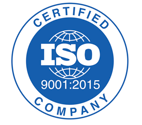
Since the 1990’s, there had been very few updates to European regulations in the medical device industry. That all changed in May 2017, when the new EU medical device regulation (the “MDR”) came into effect, bringing about significant changes for medical device manufacturers and companies selling medical devices in European markets.
The full name of the MDR is “REGULATION (EU) 2017/745 OF THE EUROPEAN PARLIAMENT AND OF THE COUNCIL of 5 April 2017 on medical devices, amending Directive 2001/83/EC, Regulation (EC) No 178/2002 and Regulation (EC) No 1223/2009 and repealing Council Directives 90/385/EEC and 93/42/EEC”. With a name like that, it shouldn’t surprise anyone that this new regulation is complex, lengthy, and will have a substantial impact on the medical device industry.Prior to the introduction of the MDR, there was a growing sense that the previous directives had grown stale, did not adequately keep up with advances and changing technology, and were in desperate need of reform to ensure patient safety to the maximum levels. As such, the MDR is comprised of extensive changes that Quality and Regulatory professionals need to become very familiar with in short order. Here are 5 action steps you must take:
1. Start Early
Although the MDR carries a 3-year transition period requiring full implementation by May 2020, please don’t make the mistake of putting off your preparation. Not only is the MDR extremely voluminous with 123 articles plus 17 annexes, but it’s dense and complex, and it’s going to take time to get your arms around it.
Your first step is to make sure you and your team have a complete understanding of the differences between the MDR and the previous medical device directives, and then you need to thoroughly assess all of your products against the new requirements. There’s no reason to wait on this…get on it now to avoid late surprises!
2. Be Ready For More Scrutiny
You will have to conduct an exhaustive portfolio review to be prepared for increased monitoring and scrutiny. The MDR is comprised of new classification rules, many of which will result in additional products now being classified as medical devices, including certain software and accessories. Legacy devices are not grandfathered under the “pre-MDR” regulations, which means there are no short-cuts.
Although it is anticipated that most products will not require reclassification, those that do will carry not only incremental compliance work by you and your team, but also enhanced review activity by the applicable Notified Bodies (the organization designated by a particular EU country to assess compliance for a product before it is sold into the market).
In general, under the MDR, the oversight from Notified Bodies will be much more stringent in terms of acceptable clinical support and data, and will include unannounced inspections as well. Also, certain devices designated as higher risk will now require submission to, and analysis by, a group of third-party experts prior to receiving auditor certification. The bottom line… you’ll have more eyes on you than ever before!
3. Get Executive Management Buy-In
I can say with certainty that your likelihood for a successful implementation of the MDR is slim to none without the full engagement and support of your executive management team. Easier said than done!
The 3-year transition period will likely make your job of getting the executive team focused on this now even harder, as they may feel a false sense of comfort by this timeline and insist that there are more urgent matters that need to be addressed in the short-term. However, it’s up to you to educate them…they need to know that their full attention is needed right now. Summarize for them your analysis of the changes in the MDR and the current gaps within your company so that they can comprehend the full magnitude of this project.
And this is not a one-time interaction. You need to have regular, formal updates so that the folks at the highest levels of your company, including the Board of Directors, can not only understand your challenges and issues, but also assist in resolving them quickly and smoothly.
4. Get The Right Resources
When thinking about the resource requirements associated with the MDR, you must consider not only the initial implementation phase, but the ongoing compliance activities that will be incremental to your current processes. For example, the MDR stipulates more stringent requirements in terms of clinical evaluation and supporting documentation which will likely necessitate more robust studies and enhanced clinical data, including post-market surveillance data.
You’ll need to analyze your in-house expertise and capacity and identify those individuals who can most effectively tackle these new requirements, and you’ll likely need to bring on outside resources as well to address any gaps in expertise or simply to give you more arms and legs to get things done and hit timelines. Not only will you need the right technical skills, but you’ll need effective project managers and strong communicators to help maximize efficiency and minimize waste and frustration. Creating an enterprise-wide project team, as well as a cross-functional steering committee to closely monitor progress and provide enhanced governance, is also prudent.
Should you get moving on your compliance efforts with respect to the MDR immediately? It’s clear from the items above that the answer to that question is a resounding “Yes”. However, don’t let your enthusiasm to move quickly get in the way of a well-thought out and documented assessment and implementation plan that has cross-functional input from both internal employees and external resources, as necessary.
Depending on the size of your portfolio, you may want to “test” your plan on a sample of products. That way, before you execute a full roll-out of the plan, you get the benefit from lessons learned on a smaller, more manageable population, where mistakes are easier to overcome. While the additional vetting and testing may make it seem like you’re getting out of the gates a little more slowly, the time (and stress) saved in the long run will be huge!
The EU medical device industry had gone quite a while without any meaningful regulatory reforms, but now is our time. The MDR will have a significant impact, not only from a compliance perspective, but also from a business perspective. The increased cost and effort associated with the MDR may cause some companies to re-assess ROI analyses and “go”/”no go” portfolio decisions. Regardless, the MDR is not going away, and the best thing you can do for yourself, your company, and of course patients is to dive into it and get to work!




